What to Look for in a Home Safe
When it comes to protecting your valuables, a home safe is an essential investment. But with so many options available, how do you choose the right one? It's not just about picking any safe; it's about finding one that meets your specific needs and provides peace of mind. Think of a home safe as your personal fortress, a small but mighty guardian that stands between your cherished belongings and potential threats like theft or disasters. In this article, we will delve into the key features and considerations that you should keep in mind when selecting a home safe, ensuring that your treasures are well-protected.
Choosing the right size and capacity for your home safe is crucial. Imagine trying to fit your entire jewelry collection into a safe that barely holds a few documents; it just won't work! Start by assessing what items you need to store. Are you protecting important documents, jewelry, firearms, or perhaps a combination of these? Once you have a clear idea, ensure the safe can accommodate them without being too bulky for your space. A safe that is too large can be cumbersome, while one that is too small might leave your valuables vulnerable. Consider the following factors:
- Item Types: Different items will require different space considerations.
- Future Needs: Think ahead; you may want to store more items later.
- Location: Ensure you have a suitable spot for the safe that won’t obstruct your living space.
The type of locking mechanism can greatly affect the security of your safe. Think of it as the door to your fortress; you need it to be strong and reliable. Explore different options, including combination locks, digital keypads, and biometric systems, to find the best fit for your needs. Each type has its own pros and cons, so let's break it down.
Combination locks provide a traditional approach to security, relying on a numerical code. They are often favored for their reliability and do not require batteries, making them a low-maintenance option. Imagine having a lock that stands the test of time, just like a classic car that never goes out of style!
Combination locks are generally more affordable and can withstand power failures, ensuring access to your safe even during emergencies. They also eliminate the risk of key loss, which can be a real headache. You won’t have to worry about misplacing your key when you need it most!
On the downside, combination locks can be slower to open under stress, and forgetting the code can lead to frustration and potential access issues. It’s like trying to remember the lyrics to your favorite song when you’re put on the spot—sometimes, the pressure just gets to you!
Digital keypads offer modern convenience, allowing for quick access to your safe. They often come with features like backlit displays and multiple user codes, enhancing usability and security. Picture yourself easily accessing your valuables with just a few taps, like unlocking your smartphone. However, remember that they require batteries, so keep an eye on the power levels!
Assessing fire and water resistance is vital for protecting your valuables from disasters. It’s like having an umbrella on a rainy day—you want to be prepared! Look for safes that meet industry standards for fire ratings and offer water protection to safeguard against flooding. After all, your safe should be able to withstand more than just a simple burglary.
Fire ratings indicate how long a safe can withstand high temperatures. Familiarize yourself with the different ratings to select a safe that provides adequate protection for your important documents and items. Think of it as choosing a fire extinguisher; you want one that can handle the heat!
Water resistance is essential for safeguarding against flooding or leaks. Consider safes designed with waterproof features to ensure your valuables remain intact during unexpected water damage. It’s like having a life jacket for your belongings—better safe than sorry!
Evaluate whether you need a portable safe or one that is permanently installed. Understanding the installation requirements and weight can help you choose the right safe for your home environment. If you’re someone who travels frequently, a portable safe might be your best bet. On the other hand, if you’re looking for something more secure, a fixed safe could be the way to go.
Portable safes are ideal for those who travel frequently or need to secure items in multiple locations. They offer convenience but may sacrifice some security compared to heavier, fixed safes. Think of them as the Swiss Army knife of safes—versatile but not always the strongest option.
Fixed safes provide enhanced security as they are bolted to the floor or wall. They are more challenging for thieves to remove, making them a solid choice for long-term storage of valuables. It’s like having a bouncer at the door of your fortress—tough to get past!
Q: What is the best type of locking mechanism for a home safe?
A: It depends on your preferences. Combination locks are reliable and battery-free, while digital keypads offer quick access. Biometric systems are great for tech-savvy users.
Q: How do I know what size safe I need?
A: Assess the items you want to store and consider future needs. Measure your space to ensure the safe fits comfortably.
Q: Are fire and water-resistant safes worth the investment?
A: Absolutely! They provide peace of mind that your valuables are protected from unforeseen disasters.
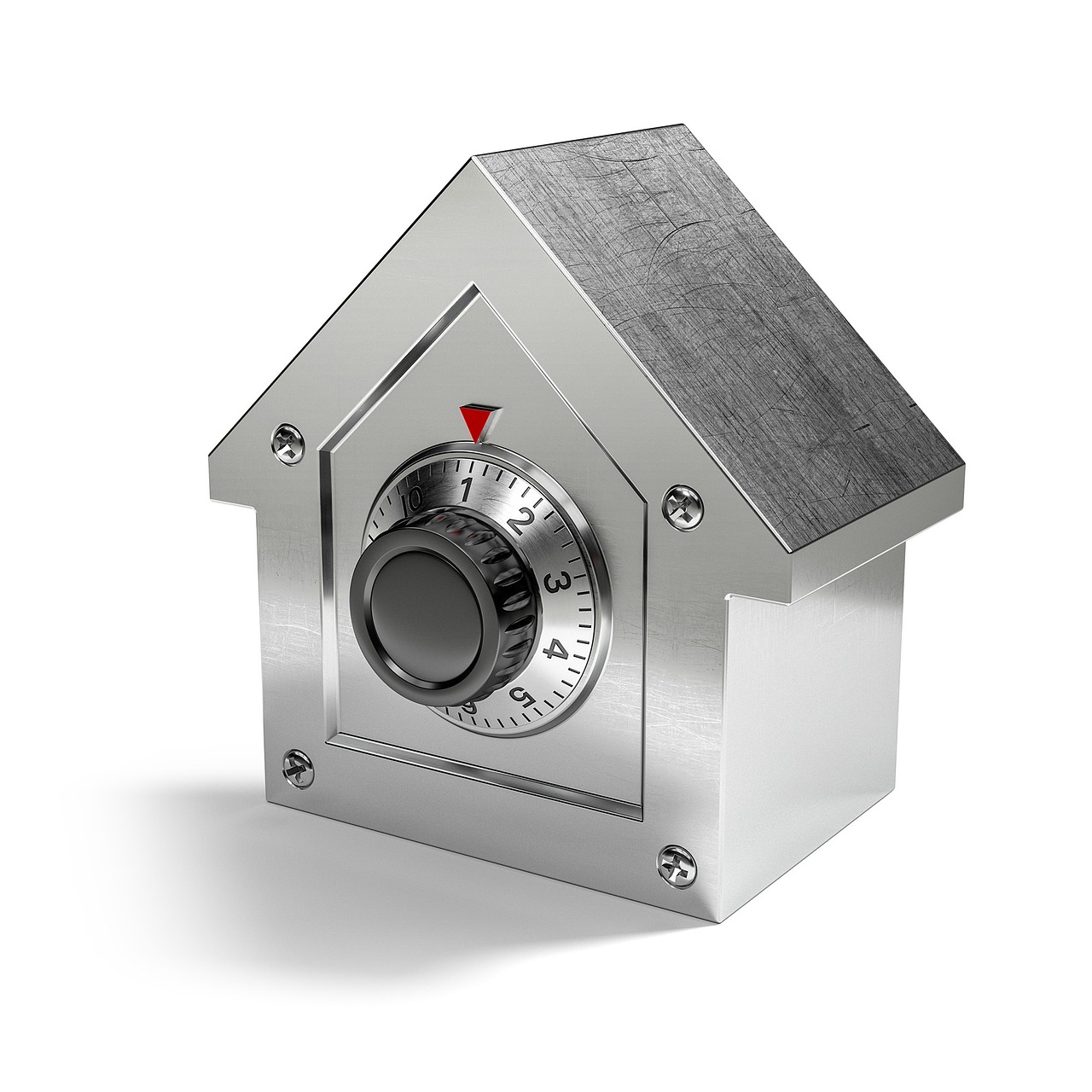
Size and Capacity
Choosing the right size and capacity for your home safe is crucial. Imagine trying to fit a square peg in a round hole; that’s what it feels like when you select a safe that’s either too small or too bulky for your needs. Before making a purchase, take a moment to assess the items you intend to store. Are you looking to secure important documents, jewelry, electronics, or perhaps a combination of all three? Each type of item requires different space considerations.
When evaluating size, consider both the interior dimensions and the overall footprint of the safe. A safe that is too large might take up valuable real estate in your home, while one that is too small could leave your prized possessions vulnerable. You wouldn’t want to cram your grandmother’s heirloom jewelry into a safe that barely fits a few envelopes, right? So, it’s essential to strike a balance between capacity and practicality.
Here are some key factors to consider when determining the right size and capacity for your home safe:
- Item Types: Different items have different storage needs. For instance, documents can be flat, while jewelry may require more vertical space.
- Future Needs: Think ahead! Will you be accumulating more valuables over time? If so, consider a safe with additional capacity.
- Location: Where will you place the safe? Ensure that it fits comfortably in your chosen location without obstructing pathways or access.
Also, consider the weight of the safe. Heavier safes are generally more secure, as they are harder for thieves to move. However, if you plan to relocate the safe or take it with you when you move, a lighter model might be more suitable. It’s a bit like choosing a backpack for a hike; the heavier it is, the more effort you’ll need to carry it, but if it’s too light, it may not hold everything you need.
In summary, understanding the size and capacity of your home safe is not just about fitting items inside; it’s about ensuring your valuables are protected while also fitting seamlessly into your living space. So, take your time, measure your items, and choose wisely!

Locking Mechanisms
When it comes to securing your most treasured possessions, the locking mechanism of your home safe plays a pivotal role. The right lock can be the difference between peace of mind and a potential disaster. In today's market, there are several types of locking mechanisms to consider, each with its own set of advantages and disadvantages. Understanding these options can help you make an informed decision that best suits your needs.
One popular choice is the traditional combination lock. These locks require you to input a specific numerical code to gain access. They have stood the test of time due to their reliability and simplicity. Not only do they eliminate the need for batteries, making them a low-maintenance option, but they also provide a sense of nostalgia, reminiscent of old-school safes. However, they do have their drawbacks, such as the potential for forgetting the code under stress, which can be frustrating.
Combination locks offer a straightforward approach to security. Their simplicity is appealing, but it’s important to weigh the pros and cons. For instance, they are generally more affordable than their digital counterparts and can withstand power failures. This means that even during an emergency, you can access your safe without worrying about a dead battery. However, the slower access time can be a disadvantage, especially if you’re in a hurry or feeling anxious.
- Affordable and reliable
- No need for batteries
- Resistant to power failures
- Eliminates the risk of key loss
- Slower to open under stress
- Risk of forgetting the code
On the other hand, you have digital keypads, which are gaining popularity for their modern convenience. These locks allow for quick access with the mere touch of a button. Many digital safes come equipped with features such as backlit displays and the ability to program multiple user codes, making them a versatile choice for households with several users. However, they do rely on batteries, so it's crucial to keep an eye on power levels to avoid being locked out.
When selecting a locking mechanism, consider your lifestyle and how often you'll be accessing the safe. If you find yourself frequently needing to retrieve items, a digital keypad might be the best option. Conversely, if you prefer a more traditional approach, a combination lock could serve you well. Ultimately, the choice comes down to balancing convenience with security.
| Lock Type | Advantages | Disadvantages |
|---|---|---|
| Combination Lock |
|
|
| Digital Keypad |
|
|
In conclusion, the locking mechanism is a fundamental aspect of your home safe that deserves careful consideration. Whether you lean towards the reliability of a combination lock or the convenience of a digital keypad, make sure to evaluate your personal needs and preferences. Remember, the ultimate goal is to ensure that your valuables are secure and accessible when you need them most.
Q1: What is the best locking mechanism for a home safe?
A1: The best locking mechanism depends on your personal needs. Combination locks are reliable and require no batteries, while digital keypads offer convenience and quick access.
Q2: Are combination locks secure?
A2: Yes, combination locks are generally secure, but they can be vulnerable if someone knows your code. Always keep your code confidential.
Q3: How often should I change the code on a digital keypad?
A3: It's a good practice to change your code every few months or if you suspect someone else may know it.
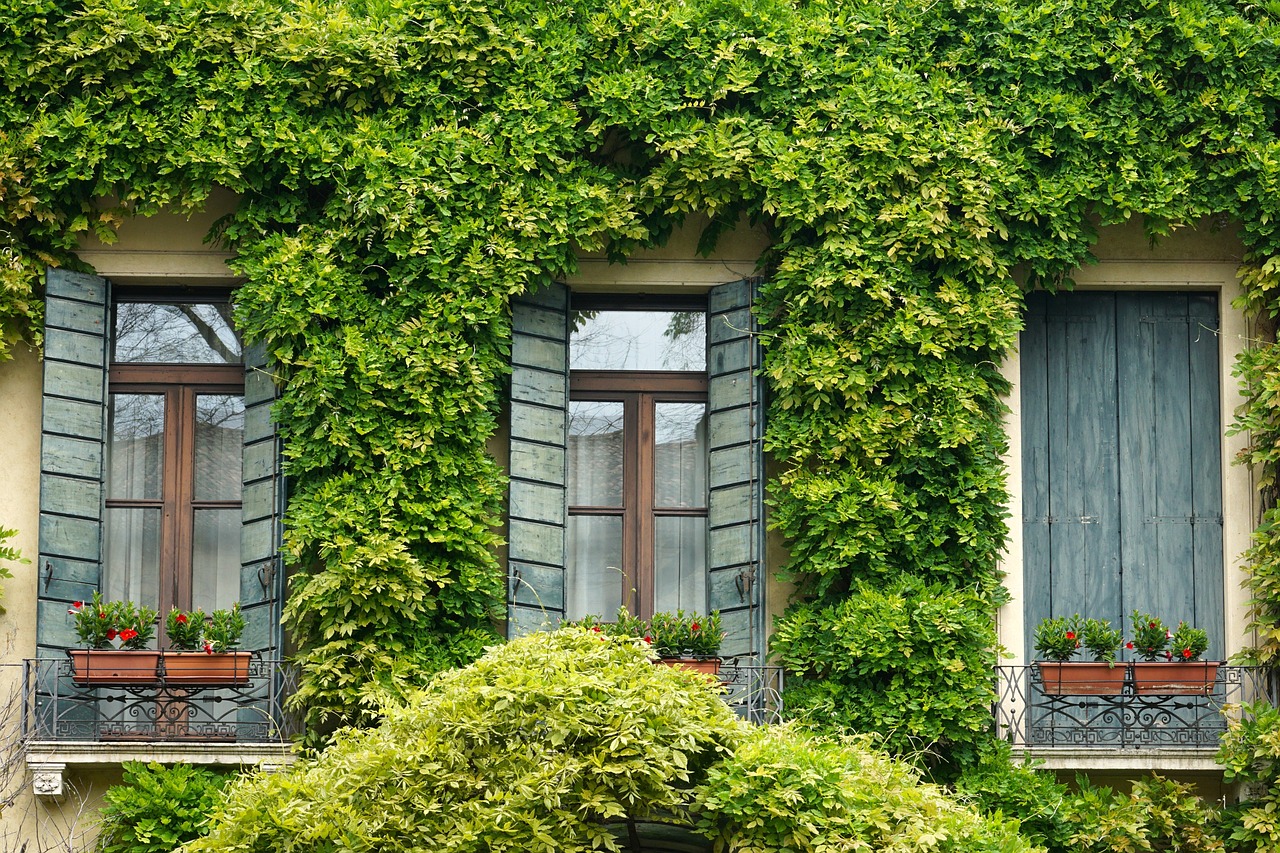
Combination Locks
When it comes to securing your valuables, provide a time-tested solution that many homeowners trust. These locks operate on a simple principle: you spin a dial or enter a series of numbers to unlock your safe. This traditional approach to security has its roots in reliability and straightforward mechanics, making it a popular choice for those who prefer a no-nonsense way to protect their belongings. Imagine being able to secure your valuables without the worry of losing a key or dealing with the complexities of modern technology. It’s like having a reliable old friend by your side, always ready to keep your secrets safe.
One of the standout features of combination locks is their low maintenance nature. Unlike digital locks that require batteries and can fail when you least expect it, combination locks are powered by your memory and a simple mechanical system. This means that even during a power outage, you can access your safe without any hassle. However, it’s essential to keep your combination secure and to practice opening the lock regularly. You wouldn’t want a situation where you’ve forgotten the code, leading to frustration and potential access issues.
Here are some advantages and disadvantages of combination locks to consider:
- Advantages:
- Generally more affordable compared to digital options.
- Can withstand power failures, ensuring access during emergencies.
- No risk of losing a key, as access is purely code-based.
- Disadvantages:
- Can be slower to open, especially under stress.
- Forgetting the code can lead to significant frustration.
In summary, combination locks are a robust option for those looking to secure their valuables without the complications of modern technology. They are reliable, easy to maintain, and provide peace of mind knowing that your belongings are protected. Just remember to keep your code safe and practice opening your lock to ensure you’re always prepared.
1. How do I reset my combination lock?
Most combination locks do not allow for easy resetting without the original code. Check the manufacturer’s instructions for specific guidance.
2. Can combination locks be picked?
While combination locks are generally secure, skilled individuals can sometimes manipulate them. However, they are less susceptible to picking compared to traditional key locks.
3. What should I do if I forget my combination?
If you forget your combination, consult the manufacturer for guidance. Some may provide a way to reset the lock with proof of ownership.
4. Are combination locks waterproof?
Most combination locks are not specifically designed to be waterproof, but they can withstand some moisture. Always check the specifications if you require water resistance.
5. How do I maintain my combination lock?
Regularly exercise the lock by turning the dial and opening it. Keep the mechanism clean and avoid exposing it to extreme conditions.

Advantages of Combination Locks
When it comes to securing your valuables, combination locks stand out for several compelling reasons. First and foremost, they offer a cost-effective solution for home safes. Unlike some high-tech locking mechanisms that can break the bank, combination locks are generally more affordable, making them an attractive option for budget-conscious consumers. Plus, you won't have to worry about replacing batteries or dealing with electronic malfunctions, which can be a real headache.
Another significant advantage is their reliability. Combination locks are designed to withstand power outages, meaning you can access your safe even when the lights go out. This is particularly important during emergencies when you might need quick access to important documents or valuables. Imagine being in a situation where a storm knocks out your power, and you need immediate access to your important papers; a combination lock has your back!
Additionally, combination locks eliminate the risk of key loss. With traditional key locks, misplacing your key can lead to a frustrating situation where you can't access your safe. However, with a combination lock, as long as you remember your code, you’re good to go. This makes them a great choice for families where multiple people might need access; you can simply share the code without worrying about who has the key.
In summary, the advantages of combination locks can be encapsulated in the following points:
- Affordability: Generally less expensive than electronic locks.
- Low Maintenance: No batteries required, ensuring reliability.
- Emergency Access: Functional during power outages.
- No Key to Lose: Eliminates the risk of being locked out.
In a world where technology can sometimes fail us, combination locks offer a reliable, straightforward solution for securing your most treasured possessions. They may not have the flashiest features, but they certainly get the job done effectively, making them a timeless choice for homeowners.
Q: Are combination locks secure enough for high-value items?
A: Yes, combination locks are generally considered secure for most residential needs. However, for extremely high-value items, consider additional security measures or advanced locking mechanisms.
Q: How can I remember my combination?
A: Choose a combination that is memorable for you, but not easily guessable by others. You could also write it down in a secure location, but make sure it’s not easily accessible to unauthorized individuals.
Q: What do I do if I forget my combination?
A: Most manufacturers provide guidance on how to reset or recover your combination, but this can vary by brand. Always refer to the user manual or contact customer support for assistance.
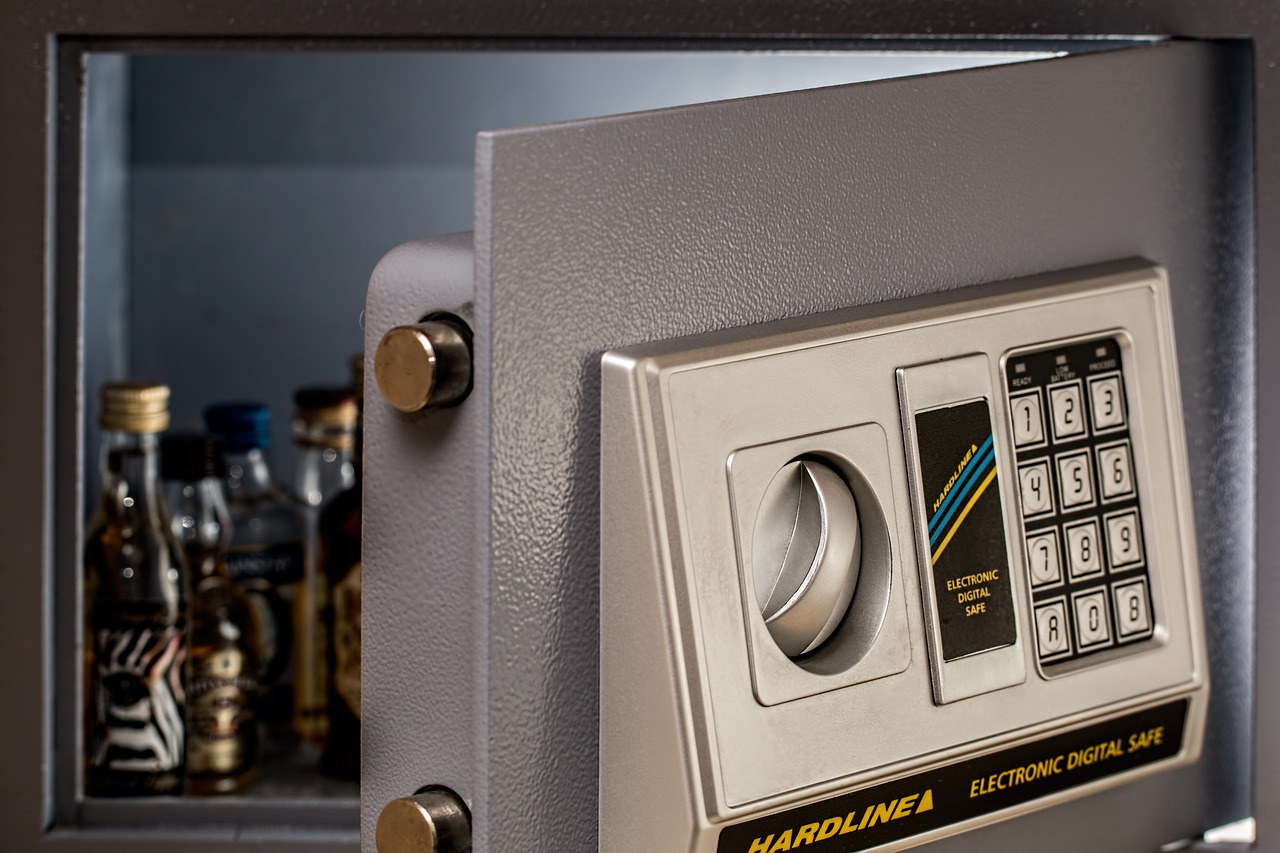
Disadvantages of Combination Locks
This article explores the essential features and considerations when selecting a home safe to ensure your valuables are well-protected from theft and disasters.
Choosing the right size and capacity for your home safe is crucial. Consider what items you need to store and ensure the safe can accommodate them without being too bulky for your space.
The type of locking mechanism can greatly affect the security of your safe. Explore different options, including combination locks, digital keypads, and biometric systems, to find the best fit for your needs.
Combination locks provide a traditional approach to security, relying on a numerical code. They are often favored for their reliability and do not require batteries, making them a low-maintenance option.
Combination locks are generally more affordable and can withstand power failures, ensuring access to your safe even during emergencies. They also eliminate the risk of key loss.
While combination locks have their merits, they also come with a few drawbacks that you should consider before making a purchase. One of the most significant disadvantages is the time factor. When you're in a hurry or feeling stressed, entering the right combination can feel like trying to solve a complex puzzle. This can lead to frustration and, in some cases, even panic if you're unable to remember the code quickly.
Additionally, if you forget your combination, accessing your safe can become a daunting challenge. Unlike a key that can be easily replaced, a forgotten code may require professional assistance or even result in permanent loss of access to your valuables. Furthermore, while combination locks are generally durable, they can be susceptible to wear and tear over time, especially if used frequently. This wear can lead to malfunctions that may compromise the security of your safe.
Lastly, combination locks may not be as secure as some modern alternatives. For instance, a skilled thief might be able to manipulate a combination lock using various techniques, making it less secure than a biometric lock or a digital keypad. In summary, while combination locks offer reliability and ease of use, their potential drawbacks—such as time-consuming access, the risk of forgotten codes, wear and tear, and vulnerability to theft—should be carefully weighed against your specific needs.
Digital keypads offer modern convenience, allowing for quick access to your safe. They often come with features like backlit displays and multiple user codes, enhancing usability and security.
Assessing fire and water resistance is vital for protecting your valuables from disasters. Look for safes that meet industry standards for fire ratings and offer water protection to safeguard against flooding.
Fire ratings indicate how long a safe can withstand high temperatures. Familiarize yourself with the different ratings to select a safe that provides adequate protection for your important documents and items.
Water resistance is essential for safeguarding against flooding or leaks. Consider safes designed with waterproof features to ensure your valuables remain intact during unexpected water damage.
Evaluate whether you need a portable safe or one that is permanently installed. Understanding the installation requirements and weight can help you choose the right safe for your home environment.
Portable safes are ideal for those who travel frequently or need to secure items in multiple locations. They offer convenience but may sacrifice some security compared to heavier, fixed safes.
Fixed safes provide enhanced security as they are bolted to the floor or wall. They are more challenging for thieves to remove, making them a solid choice for long-term storage of valuables.
- What is the best type of safe for home use? The best type of safe depends on your specific needs, but a combination of fire and water resistance, along with a secure locking mechanism, is generally recommended.
- How do I choose the right size safe? Consider the items you plan to store, ensuring the safe has enough capacity without taking up too much space in your home.
- Are combination locks safe? Yes, combination locks can be safe, but they have disadvantages such as the potential for forgotten codes and slower access times.
- Can I install a safe myself? It depends on the type of safe. Portable safes are easy to install, while fixed safes may require professional installation for optimal security.

Digital Keypads
This article explores the essential features and considerations when selecting a home safe to ensure your valuables are well-protected from theft and disasters.
Choosing the right size and capacity for your home safe is crucial. Consider what items you need to store and ensure the safe can accommodate them without being too bulky for your space.
The type of locking mechanism can greatly affect the security of your safe. Explore different options, including combination locks, digital keypads, and biometric systems, to find the best fit for your needs.
Combination locks provide a traditional approach to security, relying on a numerical code. They are often favored for their reliability and do not require batteries, making them a low-maintenance option.
Combination locks are generally more affordable and can withstand power failures, ensuring access to your safe even during emergencies. They also eliminate the risk of key loss.
On the downside, combination locks can be slower to open under stress, and forgetting the code can lead to frustration and potential access issues.
Digital keypads offer a modern convenience that many homeowners appreciate. With the simple press of a button, you can quickly access your safe, making them especially appealing for those who value speed and efficiency. These keypads often come with features like backlit displays, which make them easy to use even in low-light conditions. Additionally, many digital keypads allow for multiple user codes, which is a fantastic option if you want to grant access to family members or trusted individuals without compromising your security.
However, it’s important to consider the security aspects of digital keypads. While they are generally more convenient than traditional locks, they can also be vulnerable to certain types of attacks. For example, if someone is able to observe you entering your code, they could potentially gain access to your safe. To mitigate this risk, many modern digital safes come equipped with features such as hacking alarms and time delays, which require a wait period after multiple incorrect attempts to enter the code. This adds an extra layer of security, ensuring that even if someone tries to brute-force their way in, they will be met with obstacles.
When considering a safe with a digital keypad, it’s also wise to think about the power source. Most digital keypads run on batteries, which means you’ll need to monitor battery life and be prepared for the possibility of needing to replace them. Some safes have backup keys or alternative access methods in case the keypad fails, providing peace of mind. Ultimately, the choice between a digital keypad and other locking mechanisms comes down to personal preference, lifestyle, and how much you value convenience versus traditional security methods.
Assessing fire and water resistance is vital for protecting your valuables from disasters. Look for safes that meet industry standards for fire ratings and offer water protection to safeguard against flooding.
Fire ratings indicate how long a safe can withstand high temperatures. Familiarize yourself with the different ratings to select a safe that provides adequate protection for your important documents and items.
Water resistance is essential for safeguarding against flooding or leaks. Consider safes designed with waterproof features to ensure your valuables remain intact during unexpected water damage.
Evaluate whether you need a portable safe or one that is permanently installed. Understanding the installation requirements and weight can help you choose the right safe for your home environment.
Portable safes are ideal for those who travel frequently or need to secure items in multiple locations. They offer convenience but may sacrifice some security compared to heavier, fixed safes.
Fixed safes provide enhanced security as they are bolted to the floor or wall. They are more challenging for thieves to remove, making them a solid choice for long-term storage of valuables.
- What is the best type of safe for home use? The best type of safe depends on your specific needs, including the items you want to store and your security preferences. Digital keypads offer convenience, while combination locks provide reliability.
- How do I ensure my safe is fire and water resistant? Look for safes that have specific fire ratings and water resistance certifications. Always check the product specifications before purchasing.
- Can I install a safe myself? Yes, many portable safes are easy to install yourself, while fixed safes may require professional installation to ensure they are securely bolted.

Fire and Water Resistance
When it comes to safeguarding your most cherished possessions, should be at the top of your list of priorities. Imagine losing irreplaceable family photos or important documents in a fire or flood; it's a nightmare scenario that can easily be avoided with the right safe. Therefore, understanding the fire and water resistance ratings of a safe is essential to ensure that your valuables remain protected under any circumstance.
First off, let's talk about fire ratings. Fire ratings indicate the duration a safe can withstand extreme temperatures before its contents are compromised. Most safes come with a fire rating of 30, 60, or even 120 minutes. This means that in the event of a fire, your safe will remain intact for that specified time, giving firefighters a chance to control the blaze and save your valuables. The higher the rating, the better the protection. It’s like having an insurance policy; the more coverage you have, the less you have to worry.
To give you a clearer picture, here’s a quick comparison table of common fire ratings:
| Fire Rating | Duration | Ideal for |
|---|---|---|
| 30 Minutes | Up to 1550°F | Basic document protection |
| 60 Minutes | Up to 1700°F | Important documents and small valuables |
| 120 Minutes | Up to 1850°F | High-value items and critical documents |
Next, let’s dive into water resistance. Just as fire poses a threat, water damage can wreak havoc on your possessions. Whether it's due to flooding, burst pipes, or even firefighting efforts, your valuables need to be safeguarded from water exposure. Many safes come with water resistance ratings, which indicate how well they can withstand water damage. Look for safes that can endure submersion for a certain period of time or those that are designed to keep water out during a flood.
In a nutshell, when selecting a safe, ensure it meets industry standards for both fire and water resistance. A safe that combines both features not only gives you peace of mind but also acts as a fortress for your valuables. Think of it as a double-layered security blanket; it wraps your important items in protection from two of the most destructive forces. Remember, investing in a high-quality safe is not just about protecting your items; it's about securing your peace of mind.
- What is the best fire rating for a home safe? A safe with at least a 60-minute fire rating is generally recommended for protecting important documents and valuables.
- Can I rely on a safe’s water resistance during a flood? Yes, but it’s crucial to check the safe’s specific water resistance rating to understand how it will perform under flood conditions.
- Are combination locks as secure as digital locks? Both have their advantages. Combination locks are reliable and battery-free, while digital locks offer quick access and the ability to set multiple user codes.
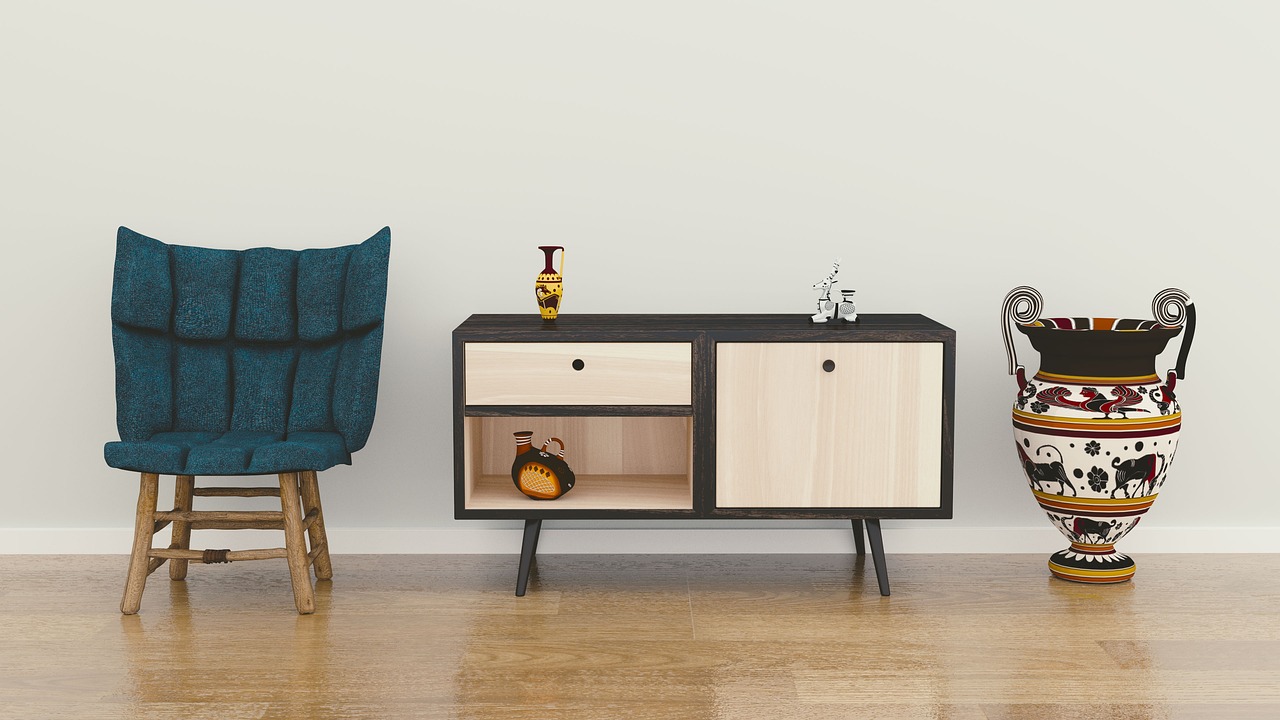
Fire Ratings
When it comes to safeguarding your valuables, understanding is essential. Fire ratings indicate how long a safe can withstand extreme temperatures during a fire, which can be a matter of life and death for your important documents and treasured items. Most fire safes are tested under specific conditions, and their ratings are determined based on the duration they can endure without compromising the contents inside. So, how do these ratings work?
Fire ratings are typically expressed in hours, such as 30 minutes, 1 hour, or even 2 hours. This means that if a fire reaches a certain temperature, the safe is designed to protect its contents for the specified duration. For instance, a safe with a 1-hour fire rating can withstand temperatures of up to 1700°F (927°C) for one hour, providing a significant buffer against destruction. It's crucial to choose a safe that offers a fire rating suitable for your needs, especially if you store highly sensitive documents like birth certificates, passports, or financial records.
To help you understand fire ratings better, here's a simple breakdown of common fire ratings and their implications:
| Fire Rating | Temperature Resistance | Time Duration |
|---|---|---|
| 30 Minutes | Up to 1550°F (843°C) | 30 Minutes |
| 1 Hour | Up to 1700°F (927°C) | 1 Hour |
| 2 Hours | Up to 1850°F (1010°C) | 2 Hours |
When selecting a safe, always look for one that has been certified by a recognized testing laboratory, such as Underwriters Laboratories (UL) or Intertek. These certifications ensure that the safe has undergone rigorous testing to meet industry standards. Additionally, consider the type of materials used in the safe's construction. Safes made from thicker steel or those with an insulated barrier often provide better fire resistance.
In conclusion, investing in a safe with a solid fire rating can be a lifesaver. It’s not just about keeping your valuables secure from theft; it’s about ensuring they survive the unexpected chaos that life can throw at you. Whether it’s a small fire in your kitchen or a larger disaster, having that peace of mind knowing your important items are protected is invaluable.
- What is the best fire rating for a home safe? - Ideally, look for a safe with at least a 1-hour fire rating for adequate protection.
- How do I know if my safe is fireproof? - Check for certifications from recognized testing laboratories like UL or Intertek.
- Can I store digital media in a fire safe? - Yes, but ensure the safe is specifically designed to protect against fire damage for electronic devices.
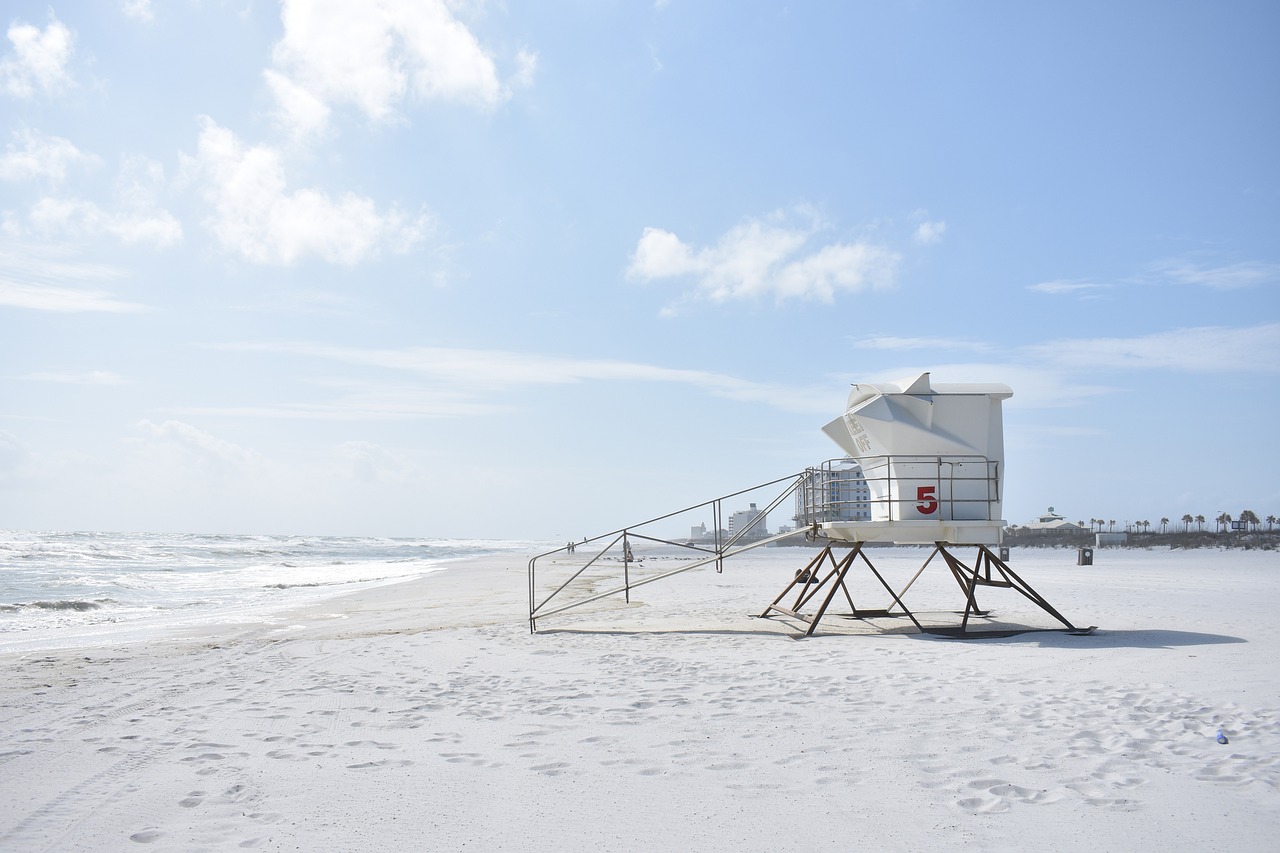
Water Resistance
When it comes to safeguarding your valuables, is a critical feature that often gets overlooked. Imagine this: a sudden storm hits, and water starts flooding your home. You rush to your safe, but it’s too late—your important documents and cherished belongings are soaked and damaged. To avoid this nightmare scenario, it’s essential to invest in a safe that offers robust water protection. Look for safes specifically designed to withstand water exposure, as they can provide peace of mind during unpredictable weather events or plumbing disasters.
Water resistance ratings vary, so it’s important to familiarize yourself with the different levels of protection available. A safe with a good water resistance rating will not only keep moisture out but also protect against submersion. For instance, some safes can remain intact for a certain duration when submerged in water. This is especially important for storing items such as:
- Important documents (like passports and birth certificates)
- Jewelry and heirlooms
- Digital media (like USB drives and hard drives)
When evaluating a safe's water resistance, consider the following factors:
| Feature | Description |
|---|---|
| Water Resistance Rating | Look for a safe with a rating that indicates how long it can withstand water exposure. |
| Seal Type | High-quality seals prevent water from entering, even during flooding. |
| Submersion Capability | Some safes can endure submersion for a specified time without damage. |
Choosing a safe with excellent water resistance features is like installing a lifeboat on a ship; it ensures that your valuables remain secure, even in turbulent waters. So, before making your purchase, take the time to research and select a safe that meets your specific needs for water protection. Ultimately, investing in a safe that can withstand water damage is not just about protecting your possessions—it's about securing your peace of mind.
- What is the best water resistance rating for a home safe?
Generally, look for safes with a rating that indicates they can withstand at least 24 hours of submersion. - Can I store electronic devices in a water-resistant safe?
Yes, but ensure the safe is not only water-resistant but also designed to protect against humidity and moisture. - How do I know if my safe is truly water-resistant?
Check for certifications and ratings from reputable testing organizations that confirm water resistance claims.

Portability and Installation
When it comes to choosing the right home safe, portability and installation are two crucial factors that can significantly influence your decision. Think about your lifestyle: do you often travel, or do you need a safe that remains in a fixed location? Understanding your needs will help you make a more informed choice. If you frequently find yourself on the go, a portable safe might be your best friend. These safes are designed to be lightweight and easy to carry, making them perfect for securing valuables while you travel or even moving them between different locations in your home.
However, keep in mind that while portable safes offer convenience, they may not provide the same level of security as their heavier, fixed counterparts. These fixed safes are typically bolted to the floor or wall, making them far more challenging for thieves to remove. The trade-off here is that while you sacrifice some mobility, you gain a significant boost in security. If you want to secure important documents, jewelry, or other valuables long-term, a fixed safe may be the way to go.
Installation is another aspect to consider. Some safes require professional installation, which can add to the overall cost and time of acquiring your safe. Others are designed for easy installation, allowing you to set them up without any tools or assistance. If you opt for a fixed safe, you'll need to evaluate the installation requirements, including the weight and the type of surface where it will be installed. For example, if you choose a heavy safe, you’ll want to ensure that your floor can support its weight without any risk of damage.
Here’s a quick comparison of the two types:
| Feature | Portable Safes | Fixed Safes |
|---|---|---|
| Security Level | Moderate | High |
| Mobility | High | Low |
| Installation | Easy | May require professional help |
| Best For | Travelers, temporary storage | Long-term storage of valuables |
Ultimately, the choice between portability and installation will depend on your specific needs and lifestyle. Assess how you plan to use the safe, where you intend to keep it, and the level of security you require. Remember, it’s not just about finding a safe; it’s about finding the right safe that fits seamlessly into your life.
- What should I store in a home safe? It's best to store important documents, jewelry, cash, and any other valuables that you want to protect from theft or disasters.
- How do I choose the right size safe? Consider the items you wish to store and select a safe that accommodates them comfortably without being overly bulky.
- Are portable safes secure? While portable safes offer convenience, they may not be as secure as fixed safes. Assess your security needs before making a choice.
- Can I install a fixed safe myself? Some fixed safes come with easy installation options, but others may require professional help, especially if they are heavy.

Portable Safes
When it comes to securing your valuables on the go, are an excellent option. These safes are designed for those who lead a dynamic lifestyle, whether you're traveling for work or leisure, or simply want to keep your important items safe while out and about. Imagine having the peace of mind that your cash, jewelry, or important documents are safe, even when you're away from home. Portable safes are typically lightweight and compact, making them easy to carry without sacrificing too much space in your luggage or vehicle.
One of the standout features of portable safes is their versatility. They can be used in various situations, such as:
- Traveling: Keep your belongings secure in hotel rooms or while camping.
- At home: Store in a closet or under a bed for quick access during emergencies.
- In the car: Safeguard your valuables while you run errands or during road trips.
However, it's essential to note that while portable safes offer convenience, they may not provide the same level of security as heavier, fixed safes. Thieves often target easily movable items, so when choosing a portable safe, look for features that enhance its security, such as:
- High-quality locking mechanisms, like combination or digital locks.
- Robust materials that resist tampering.
- Ability to secure the safe to a fixed object, like a car seat or a heavy piece of furniture.
In summary, portable safes are a fantastic choice for those who need flexibility and mobility without completely compromising on security. They cater to the modern lifestyle, allowing you to carry your peace of mind wherever you go. Just remember to evaluate the security features and choose a safe that fits your needs and lifestyle.
1. What items can I store in a portable safe?
You can store a variety of items in a portable safe, including cash, jewelry, passports, important documents, and electronics. Just ensure that the safe is large enough to accommodate your valuables.
2. Are portable safes waterproof?
Not all portable safes are waterproof, but many come with water-resistant features. Always check the specifications to ensure your safe can withstand water damage.
3. Can I use a portable safe at home?
Absolutely! Portable safes can be used at home for quick access to your valuables while providing a level of security against theft.
4. How do I secure a portable safe in my car?
Many portable safes come with cables or brackets that allow you to secure them to a fixed point in your car, such as under a seat. Always ensure it's secured properly to prevent theft.
5. What should I look for in a portable safe?
When choosing a portable safe, consider the size, weight, locking mechanism, and any additional features like water resistance or the ability to secure it to a fixed object.

Fixed Safes
When it comes to securing your most prized possessions, stand out as a formidable choice. These safes are designed to be permanently installed, often bolted to the floor or wall, which significantly enhances their security. Imagine trying to steal a safe that's anchored down; it's not just a hassle, it's practically impossible for most thieves. This characteristic alone makes fixed safes a preferred option for homeowners looking to protect valuable items such as jewelry, important documents, and heirlooms.
One of the key advantages of fixed safes is their robust construction. Typically made from heavy-duty steel, they offer a level of durability that portable safes simply can't match. This means that not only are they resistant to tampering, but they also provide a solid defense against fire and water damage, especially when you choose models with high fire ratings and waterproof features. It's like having a mini fortress in your home that keeps intruders and environmental disasters at bay.
However, it’s essential to consider the installation process. Fixed safes often require professional installation, which can add to the overall cost. But think of it this way: investing in a safe is like investing in insurance for your valuables. The peace of mind you gain knowing that your items are secure is worth the initial setup hassle. Additionally, once installed, these safes become a permanent part of your home, ensuring that they won’t be easily moved or stolen.
Another factor to keep in mind is the location. When selecting a spot for your fixed safe, choose a discreet area that’s not easily visible to outsiders. A hidden safe is a safer safe! Whether it’s in a closet, basement, or even behind a false wall, the less obvious the location, the better. Just remember, the best-kept secrets are often hidden in plain sight.
In summary, fixed safes offer unparalleled security and peace of mind for those looking to safeguard their valuables. While they require a bit of planning and investment upfront, the long-term benefits far outweigh the initial challenges. Investing in a fixed safe is like planting a tree; it takes time and effort, but the fruits of your labor will be enjoyed for years to come.
- What is the main advantage of a fixed safe over a portable one? Fixed safes offer enhanced security as they are anchored to the floor or wall, making them difficult to remove or tamper with.
- Can I install a fixed safe myself? While some individuals may attempt DIY installation, it is often recommended to hire a professional to ensure proper and secure installation.
- Are fixed safes fireproof? Many fixed safes come with fire ratings that indicate their ability to withstand high temperatures, but it’s important to check the specifications before purchasing.
- How do I choose the right location for my fixed safe? Look for a discreet area that is not easily visible from outside your home, such as a closet or basement, to enhance security.
Frequently Asked Questions
- What size safe do I need for my home?
Choosing the right size for your home safe depends on the items you plan to store. Think about what valuables you want to protect—documents, jewelry, electronics—and ensure the safe has enough capacity without taking up too much space in your home. It's like finding the perfect backpack for a trip; you want it to fit all your essentials without being too bulky!
- What type of locking mechanism is best?
The best locking mechanism for your safe really depends on your personal preference and needs. If you like traditional security, a combination lock might be your go-to. However, if you want quick access, a digital keypad is more convenient. Biometric systems are also gaining popularity for their high-tech appeal. Think of it like choosing a phone; you want one that fits your lifestyle!
- Are combination locks reliable?
Absolutely! Combination locks are known for their reliability and don't require batteries, making them a low-maintenance option. However, they can be a bit slower to open in stressful situations, and forgetting the code can be a hassle. It's like relying on a classic car; it may not be the fastest, but it gets you where you need to go!
- How do I know if a safe is fire and water resistant?
To determine if a safe is fire and water resistant, look for industry-standard ratings. Fire ratings indicate how long the safe can withstand high temperatures, while water resistance ratings show how well it can protect against flooding. Always check the specifications before purchasing—it's like reading the labels on food; you want to know what's inside!
- Should I choose a portable or fixed safe?
This decision depends on your lifestyle. If you're frequently on the move or need to secure items in various locations, a portable safe could be ideal. On the other hand, if security is your top priority, a fixed safe that’s bolted down can offer enhanced protection. Think of it like choosing between a suitcase and a closet; each has its own advantages!



















